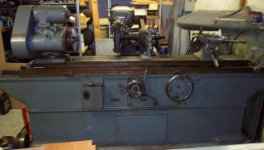Halcohead
Stainless
- Joined
- Apr 10, 2005
- Location
- Bay Area, Ca
Looking for a manual cylindrical grinder for an upcoming prototype job. The job is described below, but I'm wondering if anyone can suggest grinders that are well suited for this (so far, all I've found are Myfords). I've never run an OD grinder (first article made by turning .0005" oversize, then lapping). Are there important or helpful features to look out for on OD grinders (eg. universal vs plain heads)? Buying used, are there any unusual things to lookout for compared to a standard lathe or surface grinder?
Job is:
Qty 2-30x shafts, 2" max diameter x 10" long, centers in both ends, with 3 different ground diameters, no tapers or ID features. Tightest tolerance is +/- 1um (+/-40 millionths) on a 3/8" diameter ground to a shoulder (with grinding relief).
Of course if anyone has a good candidate machine for sale, I'm now in the market!
Job is:
Qty 2-30x shafts, 2" max diameter x 10" long, centers in both ends, with 3 different ground diameters, no tapers or ID features. Tightest tolerance is +/- 1um (+/-40 millionths) on a 3/8" diameter ground to a shoulder (with grinding relief).
Of course if anyone has a good candidate machine for sale, I'm now in the market!



